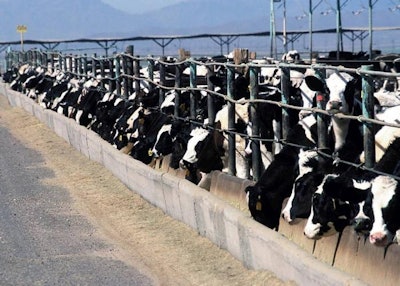
There are causes for optimism in the dairy industry in one region of Kenya, but milk producers and processors elsewhere face a number of challenges ranging from cheap imports to poor quality feeds and increasing environmental legislation.
Nakuru county in central Kenya is one area of the East African country where the dairy industry has enjoyed positive developments in recent times.
Farmers in the area are making good profits, according to the local agriculture department, and milk sales have risen steadily, reports Daily Nation. An agriculturally productive region, Nakuru has attracted milk collections from all the country’s major processors, and farmers have been taking up new technologies and training opportunities.
Chairman of the Kuresoi Dairy Cooperative Society, Samuel Ruto, attributes the increase in milk production to nearly 10,000 liters per day currently from just 800 liters a few years ago to these developments in the local industry.
Nakuru farmers have been attracted to dairying by the guaranteed market, and assured payment system for their milk. Training courses have been offered to smallholders, emphasizing the importance of artificial insemination (AI) to achieve genetic improvement, and how to avoid seasonal fluctuations in the feed supply by paying attention to the growing, harvesting and storage of fodder for the animals.
Training to achieve better climatic resilience has been offered by processor Brookside Dairy, which processes milk from 30 dairy cooperatives in Nakuru county, and has worked with some of these groups to set up milk collection and cooling systems across the main town of Nakuru.
Kenya’s dairy industry faces constraints to further growth
Recent stabilization of the Kenyan dairy sector has been achieved by an increase in the number of milk processors and the adoption on modern technology, according to Fredrick Mureithi, assistant general manager of Githunguri Dairy Farmers Co-operative.
However, he said, the sector is still being held back by poor product handling by smallholder farmers, milk adulteration, and feeds contaminated with aflatoxins, reported the Kenyan Broadcasting Corp. this month.
Founded near Nairobi by 31 dairy farmers in the 1960s, Githunguri Dairy Farmers Co-operative claims to have revolutionized the country’s dairy sector.
According to Stories.Coop, the cooperative commissioned its own milk processing facility in 2004. Since then, it has grown to become the third largest dairy operation in Kenya, producing 170,000 liters of milk daily, and its Fresha brand of milk is the leading brand in and around the capital city. It also produces yogurt, butter, cream, and ghee under the Fresha brand.
Over the past two months, Kenyan milk processors have reduced the price they pay to producers by as much as 40%, reports Daily Nation, while consumer prices remain as high as ever.
Imports from neighboring countries are being blamed for this situation, according to the chairman of the Kenyan Dairy Farmers Federation.
There are 4.5 million dairy cows in Kenya, according to the Kenya Dairy Board, producing 5.28 billion liters of milk a year, 600 million liters of which is formally marketed. The animals are kept by 1.8 million smallholder farmers, and the sector offers 1.2 million jobs, which help contribute 44% of the country’s livestock-related annual gross domestic product (GDP), according to the organization.
Many factors are likely to lie behind the apparent stagnation of Kenya’s dairy sector over recent years, as revealed by official production estimates.
In 2017 — the most recent year for which figures have been published — Kenyan milk production from dairy cows was 3.56 million metric tons (mmt), according to FAOstat, the statistics arm of the United Nations’ Food and Agriculture Organization (FAO). This was down slightly from the 3.64 mmt estimated at the start of the decade, and 13% below peak production of 4.12 mmt in 2016. In addition to output from dairy cows, FAO estimates Kenya also produced 256,000 metric tons (mt) of goat milk in 2017, and 66,600 mt of sheep milk.
Nairobi dairy plant closed for environmental infringement
This week, a dairy processing plant in the capital, Nairobi, was closed down. The plant — which belongs to Sameer Agriculture and Livestock Limited and produces Daima Milk — was alleged by the National Environmental Management Authority of discharging untreated waste water into the public sewage system, reports The Star. One of the firm’s senior managers was arrested.
Shortages of corn for livestock have been a challenge for Kenyan feed manufacturers and livestock farmers for much of this year. However, the U.S. Grains Council has this week agreed with the national animal feed producers’ association to address some of the key factors hindering the sector’s further development, including inconsistent supplies of feed ingredients.

















